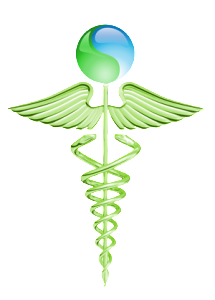
Infections are caused by four types of organisms, which are bacteria, viruses, fungi and rickettsiae. They are lumped into one category called germs. Germs are easily transmitted from one person to another through coughing, sneezing, or touching. Germs can also be picked up from contact with various surfaces and they can invade the body through an open wound, a cut, or a scrape. Once inside the body, germs go through an incubation period during which they increase in number until they are strong enough to mount an offensive and produce a disease. The incubation period can be as short as a few days or as long as several months. Once the germs begin their attack the body responds with symptoms of infection such as fever, inflammation or swollen glands. However, when these germs attack, the body’s immune system goes into action to fight off the invaders. Sometimes the immune system response is so successful that the person has no symptoms and doesn’t even know that they actually had this disease. But even though the person displayed no symptoms and was not aware of ever having the disease, that person is now a carrier and can transmit the disease to someone else. And when bacteria or viruses invade the body of someone who has immunity due to having once had the disease, that person can also be a carrier even though they don’t succumb to the invading organisms.
The type of infection that is produced depends upon the type of invader. Harmful bacteria can cause staphylococcal or streptococcal type infections and such diseases as whooping cough, diphtheria, cholera, tetanus, and tuberculosis. Bacterial infections can settle in one part of the body or spread over the entire body. The bacteria operate in two ways. Sometimes they simply interfere with the normal function of healthy cells. Other times the bacteria release toxins and the toxins are responsible for producing the infection within the body.
Fortunately, there are a number of antibiotics which, when used according to directions, can control bacterial infections. However, there are now some bacteria, which are displaying an immunity to these antibiotics.
Fungal infections are spread by contact. This contact can be directly with a person who has the infection or indirectly by touching a surface that the infected person has touched. They can also be acquired through contact with water that has been exposed to a carrier. Typical fungal infections are ringworm and yeast.
Since there are so many viruses, viral infections are difficult to fight off. The common cold is a viral infection and there are more than 100 viruses that can cause it. Viral infections are also responsible for such illnesses as mumps, chicken pox, measles, and German measles. Viruses can even hide out in the body for long periods of time and then the infection will re-occur during a period of stress.
Rickettsiae don’t invade the body independently. They are carried by pests such as lice and ticks.
Then when the human is bitten, the rickettsiae enter the body. Once within the body, the rickettsiae attack the small blood vessels. The result is an inflammation, which often results in a rash and fever. Rickettsial infections can be very dangerous. Rocky Mountain spotted fever is the result of a tick bite while lice carry typhus.

Source by Brenda Williams
 Vitamin Agent The Health & Naturalistic Source
Vitamin Agent The Health & Naturalistic Source





